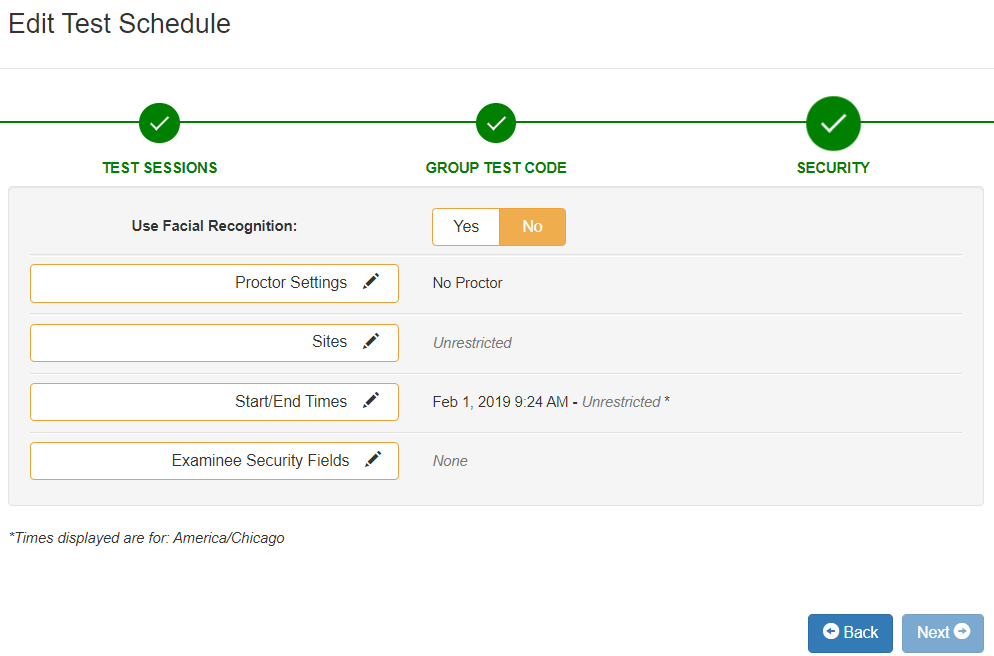
What is multi-modal test delivery?
Multi-modal test delivery refers to an exam that is capable of being delivered in several different ways, or of a online testing software platform designed to support this process. For example, you might provide the option for a certification exam to be taken on computer at third-party testing centers or via paper at the annual conference for the profession. The goal of multi-modal test delivery is to improve access and convenience for the examinees. In the example, perhaps the testing center approach requires an extra $60 for the proctoring fee as well as requiring the examinee to drive up to an hour to get there; they might be attending the annual conference next month anyway, and it would be very convenient for them to duck into a side room to take the exam.
Multi-modal test delivery requires scalable security on the part of your delivery partner. The exam platform should be able to support various types of exam delivery. Here are some approaches to consider.
Paper exams
Your platform should be able to make print-ready versions of the test. Note that this is quite different from exporting test items to Word or PDF; straight exports are often ugly and include metadata. You might also need advanced formats like Adobe InDesign.
Additionally, the system should also be able to import the results of a paper test back in, so that it is available for scoring and reporting along with other modes of delivery.
FastTest can do all of these things, as well as the points below. You can sign up for a free account and try it yourself.
Online unproctored
The platform should be able to deliver exams online, without proctoring. Additionally, there can be several ways of candidates entering the exam.
1. As a direct link, without registration, such as an anonymous survey
2. As a direct link, but requiring self-registration
3. Pre-registration, with some sort of password to ensure the right person is taking the exam. This can be emailed or distributed, or perhaps is available via another software platform like a learning management system or applicant tracking system.
Online remote-proctored
The platform should be able to deliver the test online, with remote proctoring. There are several levels of remote proctoring, corresponding to increasing levels of security or stakes.
1. AI only: Video is recorded of the candidate taking the exam, and it is “reviewed” by AI algorithms. A human has the opportunity to review the flagged students, but in many cases it does not happen.
2. Record and review: Video is recorded, and every video is reviewed by a human. This provides stronger security than AI only, but it does not prevent test theft because it would only be found a day or two later.
3. Live: Video is live-streamed and watched in real time. This provides the opportunity to stop the exam if someone is cheating. The proctors can be third-party or in some cases the organization’s staff. If you are using your staff, make sure to avoid the mistakes made by Cleveland State University.
Testing centers managed by you
Some testing platforms have functionality for you to manage your own testing centers. When candidates are registered for an exam, they are assigned to an appropriate center. In some cases, the center is also assigned a proctor. The platform might have a separate login for the proctor, requiring them to enter a password before the examinee can enter theirs (or the proctor enter it on their behalf).

Formal third-party testing centers
Some vendors will have access to a network of testing centers. These will have trained proctors, computers, and sometimes additional security considerations like video monitoring or biometric scanners when candidates arrive. There are three types of testing centers.
1. Owned: The testing company actually owns their own centers, and they are professionally staffed.
2. Independent/affiliated: The testing might contract with professional testing centers that are owned by a different company. In some cases, these are independent.
3. Public: Some organizations will contract with public locations, such as computer labs at universities or libraries.
Summary: multi-modal test delivery
Multi-modal test delivery provides flexibility for exam sponsors. There are two situations where this is important. First, a single test can be delivered in multiple ways with equivalent security, to allow for greater convenience, like the Conference example above. But it also empowers a testing organization to run multiple types of exams at different levels of security. For instance, a credentialing board might have an unproctored online exam as a practice test, a test center exam for their primary certification exam, and a remote-proctored test for annual recertification. Having a single platform makes it easier for the organization to manage their assessment activities, reducing costs while increasing the customer experience for the people for whom it really matters – the candidates.
Nathan Thompson, PhD
Latest posts by Nathan Thompson, PhD (see all)
- What is a T score? - April 15, 2024
- Item Review Workflow for Exam Development - April 8, 2024
- Likert Scale Items - February 9, 2024

